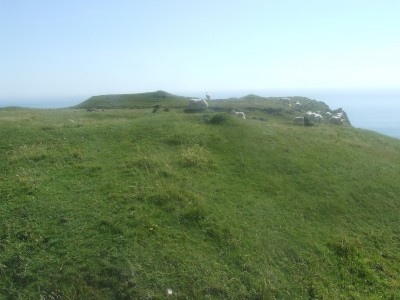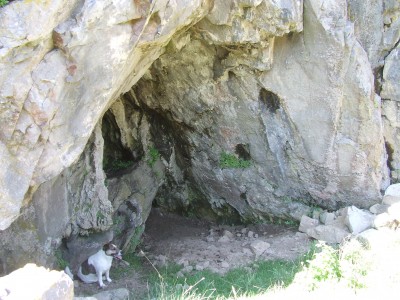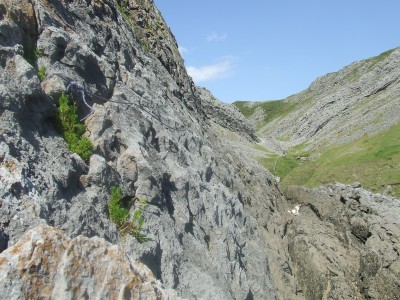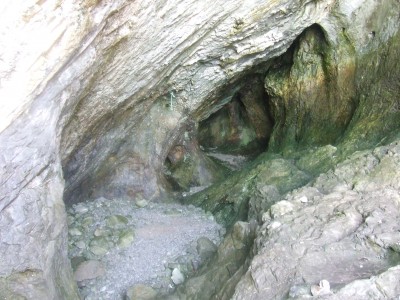Family day trip to the seaside to enjoy the fine weather, set off for the Gower, South Wales. 3.5 hours later arrived at Pitton and a 0.5 mile walk to the beach at Mewslade. The family settled down to an afternoon on the beach while I headed off to find Paviland Cave NGR SS 4370 8590. Along the way passed by a number of forts on the cliff top path.

The fort pictured above is on the cliff top above Paviland Cave. There is not an established path down to the cave but an approach is not too difficult. On the way is a rock shelter that offers some shade [for hot dog] and is used by the local sheep population.

On arrival at Paviland Cave the tide was still on the high side and access from the beach was not safe so backtracked and traversed the rock face at a higher level to the cave entrance, unfortunately had to leave the dog behind for a while.

Paviland Cave is of great archaeological importance and has been excavated on a number of occasions.
The first recorded excavation was in the early 1820’s by the Reverend William Buckland who uncovered the so-called ‘Red Lady of Paviland’, which actually turned out to be a fairly complete Upper Palaeolithic human male skeleton dyed with red ochre. Along with the Red ‘Lady’ burial were found a mammoth ivory bracelet, a perforated periwinkle pendant, numerous seashells and fifty broken ivory rods. Marker stones were placed at the head and foot of the grave.

Three bone spatulae have been revealed and the cave floor has also produced numerous flint implements along with the by-products of their manufacture, together with charcoal and ash found in contexts that appear to predate the burial. Radiocarbon dating suggests earlier occupation about 3000 years before the burial and there is evidence to suggest that the cave was intermittently occupied both before and after that date (Pryor, 2003 pp 45-51).
After visiting the cave site walked back along the cliff path to the beach joining the family and spend a couple of hours swimming in the sea, body boarding and exploring rock pools before heading back home, stopping for chips on the way, the kids were flaked.
Reference: Pryor, F. 2003. Britain BC: Life in Britain and Ireland before the Romans. Harper Perennial.

